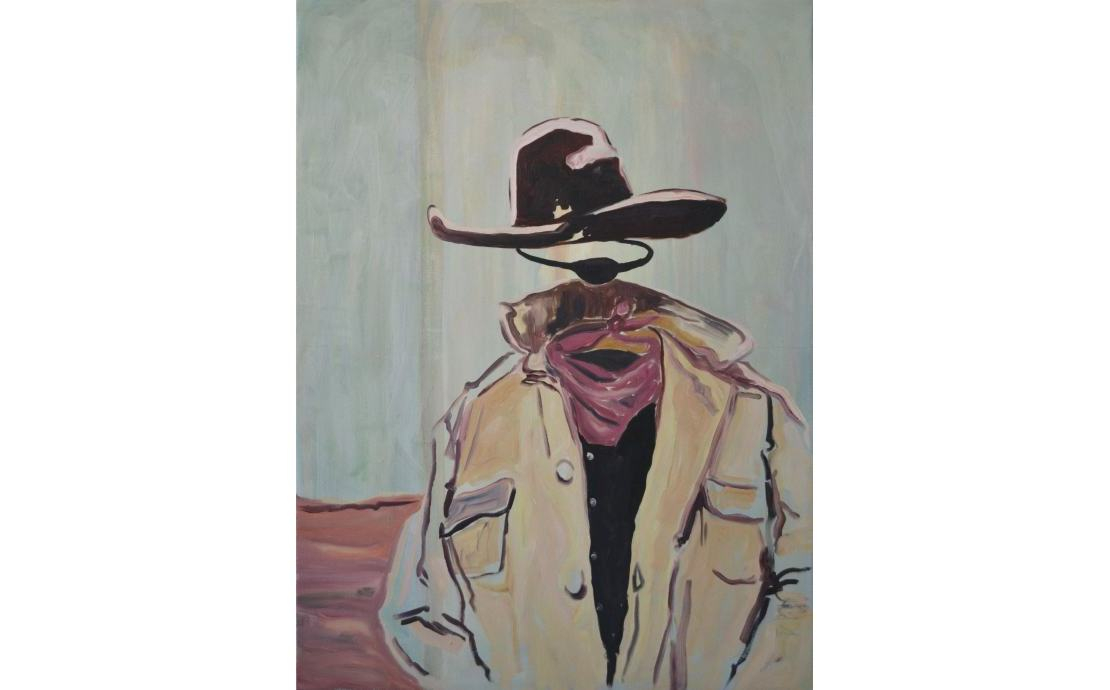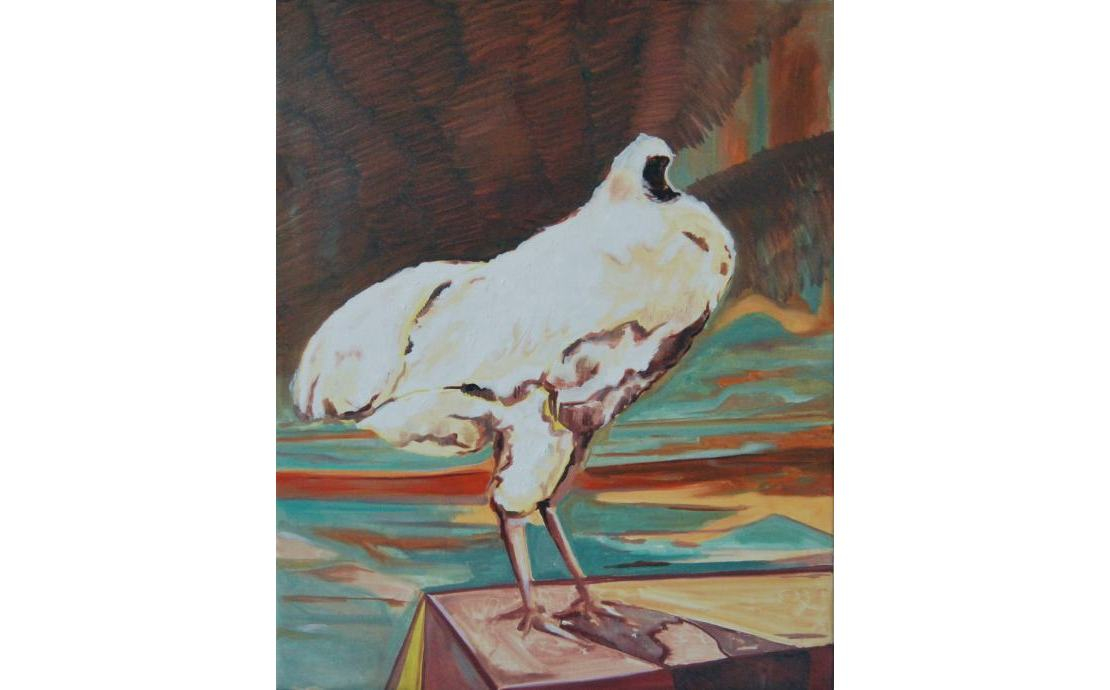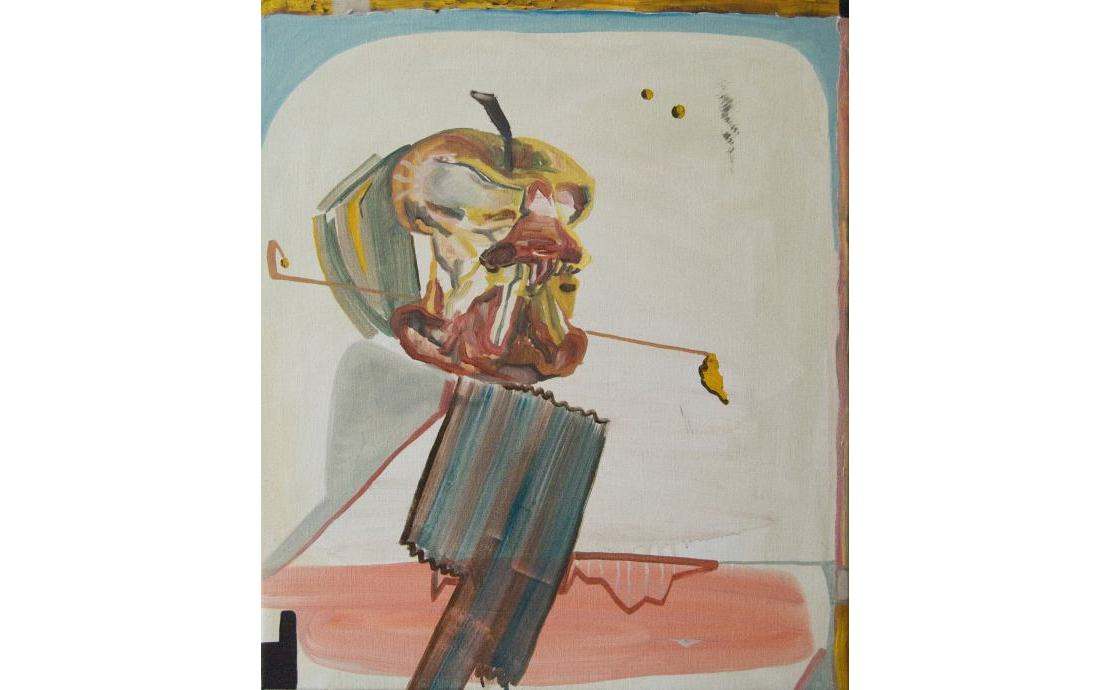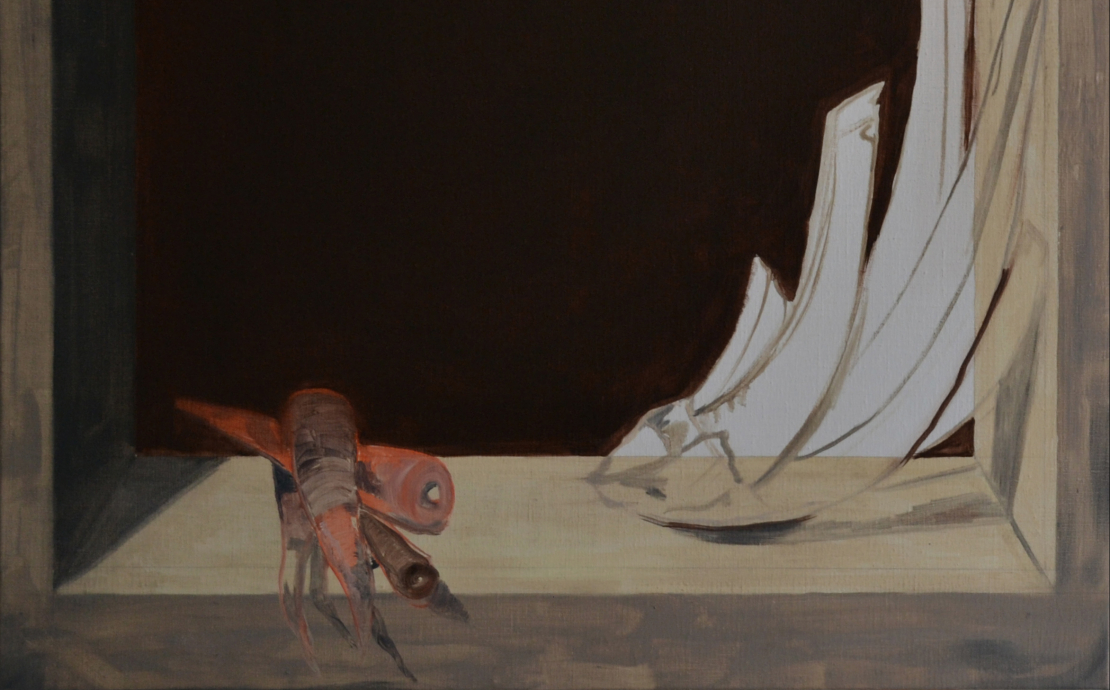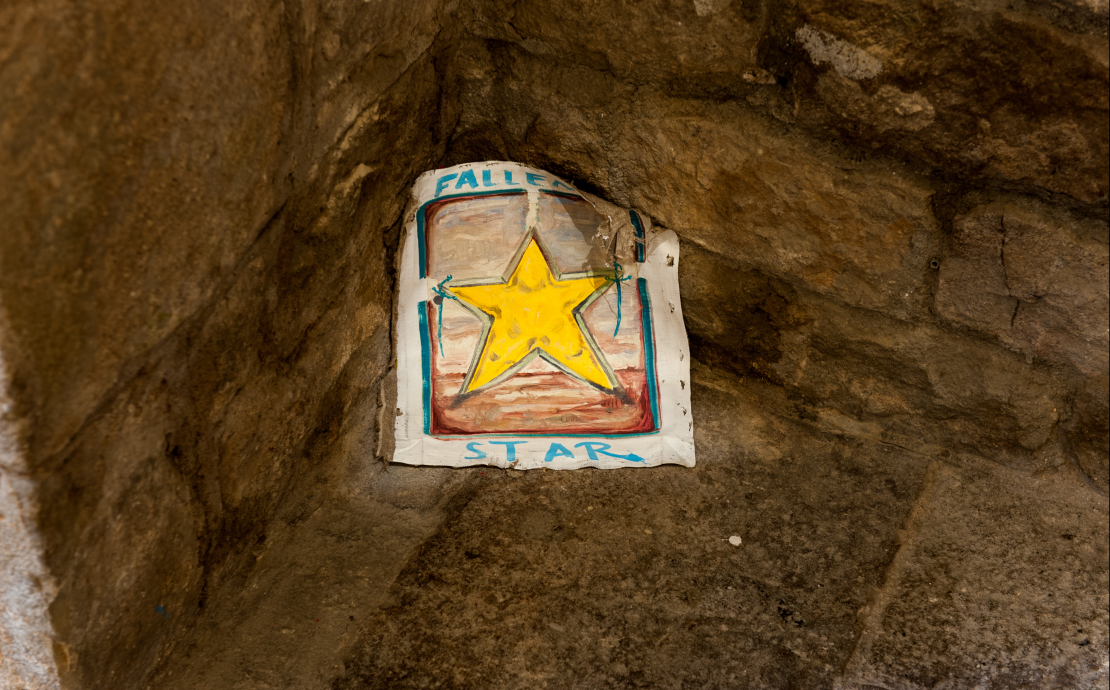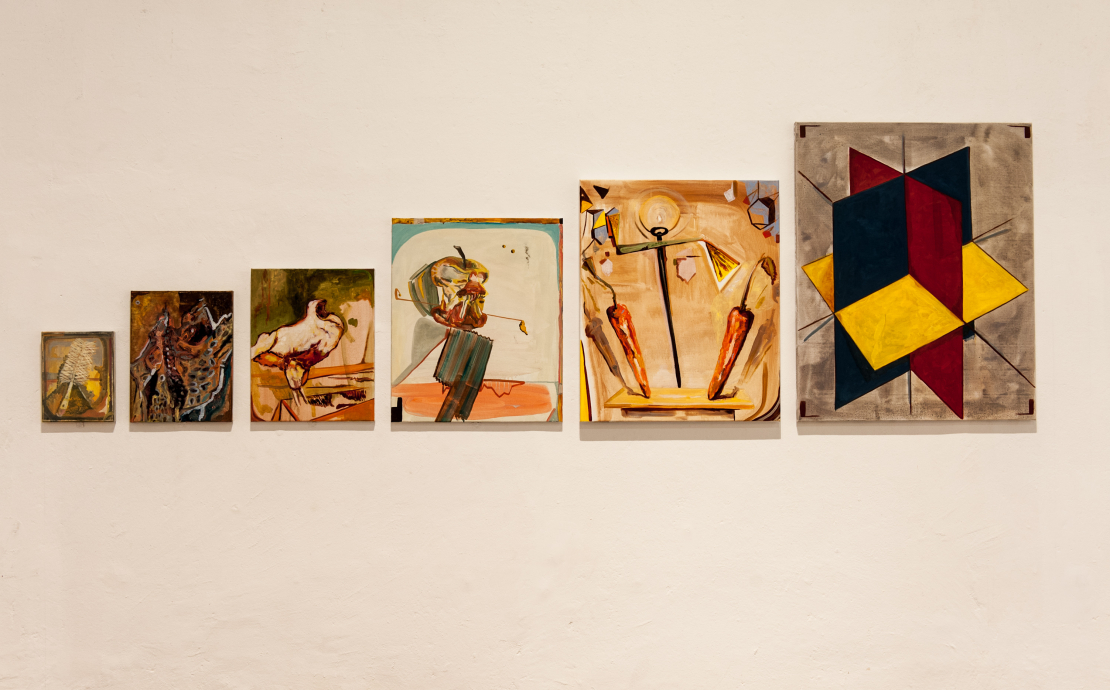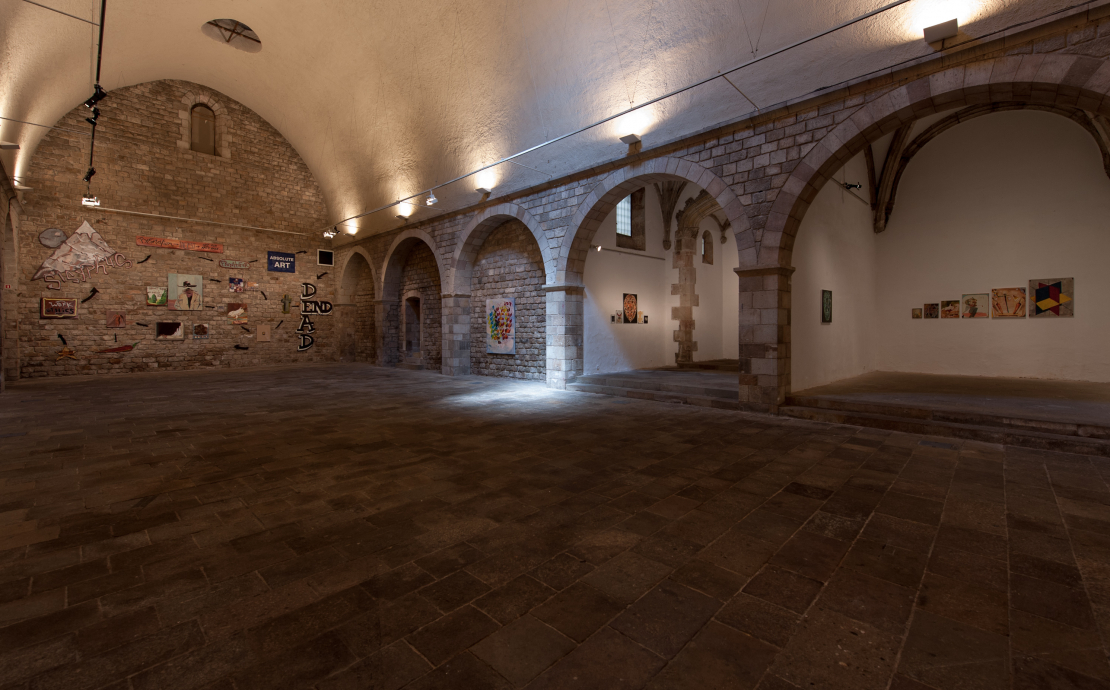Sisyphus, rhopography and a headless chicken
Rasmus Nilausen (Copenhagen, Denmark, 1980) lives and works in Barcelona where he is currently a resident artist at Hangar. He holds a BA in Fine Art from the University of Barcelona and an MA in Fine Art from Chelsea College of Arts and Design – University of the Arts London. His work explores the limits of painting and how we interpret imagery through this medium. To this end, he selects and rearranges images from his surroundings in a process, which includes time as well as “cut and paste” – understood as a social phenomenon – as key elements. This results in new narratives that often allow multiple interpretations.
The exhibition presented by Nilausen in La Capella, “Sisyphus, rhopography and a headless chicken”, is derived from the artist’s vision in which, he at times, becomes a sort of John Wayne of contemporary painting: “shoot first, ask questions later”. Or maybe more like a headless chicken. Instinctive, making decisions based on spinal reflexes. Luckily, a posterior analysis is possible. The extra-pictorial discourse, what today might be called narrative, is rarely noticeable at first in the work of Nilausen. It is veiled in the background. Its advantage – and problematic – are those things that become sensations when contemplating painting. No longer a game of chance but a play on coincidences and connections, closer to the links on YouTube than Deleuze and Guattari’s rhizome.
History painting has always been considered the most important of the genres of painting. Both Royalty and the Church deployed it as a means of constructing legends. Said painting fulfilled the imperative task of upholding established structures, while depicting to the viewer the achievements and merits made by whoever commissioned the work. Norman Bryson analyses this phenomenon in terms of “megalography”, which portrays a supposedly important event (historical events, biblical passages, mythological legends, etc.). Nevertheless, by applying a simplistic logic, we come upon the so-called “rhopography”, i.e. everything that lacks importance: the unimportant.
Still life painting, particularly renowned in Spain thanks to figures such as Cotán and Zurbarán, has always been considered the least important genre of painting. This, in part, is due to the absence of the human figure, an absence that in this particular project does not become a narrative veto, but a variation that ends up turning it into something different and less obvious. What occurs may be simple and perhaps anecdotal. Paradoxically, Greek mythology – megalographic by nature – will serve as an argumentative example. Sisyphus fell out of favour on account of his extraordinary cunningness. He was severely punished by the gods who condemned him to lose his eyesight and to push a boulder up a mountainside forevermore, only to watch it plunge to the bottom of the valley each time he neared the peak of the mountain. Sort of like an endless loop of punishment. To a certain extent, the artist shares fate with Sisyphus, since he executes a constant and often absurd, yet necessary, task. “It has to be done!”; it does not really matter whether it is out of obligation or pleasure. Continuity is what is valued here, since the best work is and will most certainly be the next one. The one yet to be done.
On another scale (though less heroic than most characters played by John Wayne) we have the incident that occurred on 10th September 1945, in a town of the unlikely name of Fruita, Colorado where a farmer called Lloyd Olsen – Danish surname – had his mother-in-law over as a dinner guest. Eager to treat her right, he went to the yard to slaughter a chicken. After cutting off its head, the farmer stood watching, waiting for the final spasms of the bird’s body but, surprisingly, it was still alive. In fact, it survived for more than 18 months and became a symbol of a certain resistance to accept one’s fate. This project turns rhopography, certainly subjective, into a kind of history painting.
Links
Rasmus Nilausen - www.rasmusnilausen.dk
Colaborators



